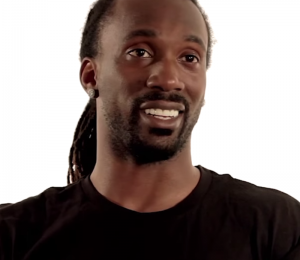
Flickr Creative Commons; CC 2.0
Around this time of year, many Christians take time specifically to celebrate the birth of Christ. Yet a number of myths have arisen around the story, ones with no actual basis in Scripture. Without further ado, here are eight of them.
Myth 1: “There were 3 Magi”
In actuality, we don’t know how many magi there were. Everything we know about the magi comes from Matthew 2:1-12, and it does not tell us how many there were. All we know is that there was more than one (μάγοι is plural) and that they brought three gifts – but that does not tell us how many there were, there could have been 2 or 14 for all we know.
Myth 2: “The Magi were kings”
Matthew doesn’t tell us whether or not the magi were kings but in all likelihood they weren’t. The word variously translated “wise men” (ESV) or “magi” (NASB) is μάγος, the same word used for Elymas the magician in Acts 13 and in Daniel 2 for “magicians.” The magi were probably some sort of eastern astrologers, but beyond that, we don’t have any specifics.
Myth 3: “The Magi arrived when Jesus was an infant”
This myth, propagated by nativity scenes that show the shepherds and magi at the manger at the same time, fails to read Matthew 2 closely. We know that Herod made a point of finding out when the star first appeared from the magi (2:7), and that later he ordered the slaughter of every male child in Bethlehem two years and under, “according to the time that he had ascertained from the wise men” (2:16). It would appear then, even if Herod had played it safe and ordered more children slaughtered than he needed to (which he probably did), that Jesus was somewhere between 1 and 2 years old, but not a newborn.
Myth 4: “Jesus was born the same night Mary and Joseph arrived in Bethlehem”
Luke 2:6 says, “And while they were there, the time came for her to give birth.” The beginning of this verse contains a phrase (Ἐγένετο…ἐν τῷ εἶναι) used three other places in Luke (5:12, 9:18, and 11:1) and it always carries the idea of duration. The idea is that during Mary and Joseph’s stay in Bethlehem the time came for Jesus to be born.
Myth 5: “Jesus didn’t cry as a baby”
This myth is definitely the one I dislike most. It comes from the third verse of the sentimental Christmas song, “Away in a Manger,” “But little Lord Jesus, No crying He makes.” There is nothing in the Bible that even remotely gives this impression and this verse leads in a docetic way that downplays the true humanity of Christ.
Myth 6: “It was unusually quiet the night Jesus was born”
Like the previous myth, this also comes from a sentimental Christmas carol, “Silent Night.” Again, this myth has no basis in the accounts in Scripture. Given that Jesus was born during a census when everyone needed to travel to his place of origin, Bethlehem was probably rather crowded at that time and not too quiet. In addition, births are generally not silent, peaceful endeavors.
Myth 7: “It was snowy when Jesus was born”
This myth has probably arisen because in much of Europe and North America (the centers of the Christian west), it is very snowy around December 25th. However, we don’t know that Jesus was born in December and even if he was, Palestine is much warmer than most of North America and Europe given its southern latitude and proximity to the Mediterranean sea. Short story: there probably wasn’t a whole lot of snow around Bethlehem.
Myth 8: “Jesus was born in a random stable because the hotel was full”
This myth is different from the rest in that it is partially true. Jesus was laid in a manger, but probably not a manger in a random stable because a mean innkeeper turned Joseph and Mary away. The word translated by the ESV, NASB, and KJV as “inn” is κατάλυμα. This word is used two other places in the New Testament (Mark 14:14 and Luke 22:11) both with the meaning of “guest room.” In addition, elsewhere when Luke clearly refers to an “inn” he uses a different word (Luke 10:24, πανδοχεῖον). Kenneth Bailey argues for this understanding in his book, Jesus Through Middle Eastern Eyes. He shows a diagram the layout of typical Palestinian house with a guest room:

Bailey marshals much more evidence to support his view in the first chapter of his book, which can be found online here. The gist is that Jesus was laid in a manger “in a warm and friendly home, not in a cold and lonely stable” (Bailey, p. 36).
Let these myths teach us to read the birth narratives of Christ closely and carefully, being cautious to neither overlook what is actually there nor to read in to them what is not there. Simply put, let us read them as we should read any passage of the Bible, as God’s word and worthy of our attention and obedience. When we do this the message of the Scriptural accounts shines clear: Christ, the Son of God, has condescended and taken on human flesh in order that He might redeem a people for Himself; let us respond with the angels, “Glory to God in the Highest.”
This was guest post from Taylor Drummond.
Taylor has a B.A. in Biblical & Religious Studies from Grove City College and is currently working on his M.Div. from Westminster Theological Seminary. You can read more from Taylor at his personal blog.



